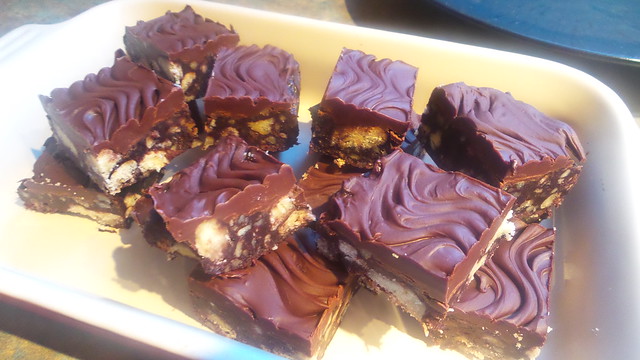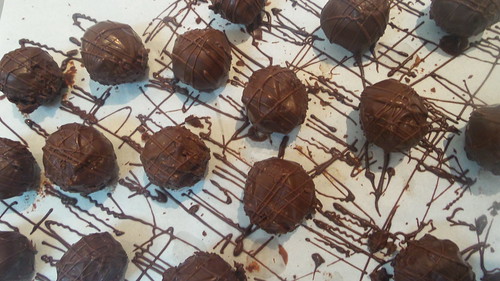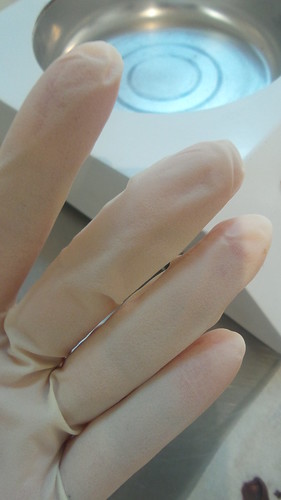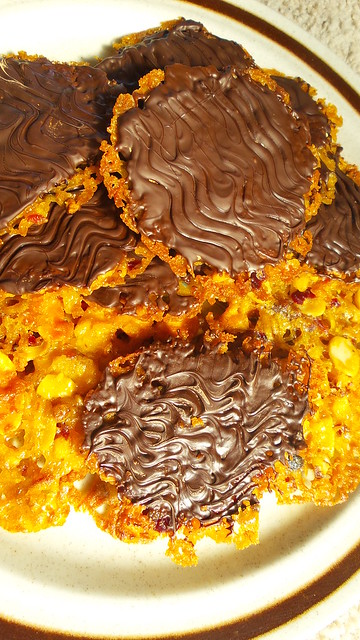Our local library invariably has a small display of books that are for sale. These are either former library books or (I am guessing) they are books that people have donated that the library has chosen not to add to its collection. That’s the only way I can explain why some have barcodes and some don’t. The books are always insanely cheap (20c for a paperback) and while the number and range available varies widely, it is always worth spending a minute or two perusing.
A month or so ago I picked up Basics to Brilliance: Slices Recipes, put together by Family Circle and published only a few years ago. For some reason, I have it in my head that now that Master 4 is at pre-school (and soon to be at school) slices should be a part of my repertoire. I don’t know why I think that – I’m not the type of parent who includes sweet treats in a lunch box and we certainly don’t have cake and friends all the time at home.
I’ve spent quite a lot of time poring over this book and even managed to induce some cookbook envy in at least one friend. Even though the book was only published in 2007 the recipes definitely have a slightly old fashioned feel to them. I’m not sure that had this book been produced in the 70s or 80s it would have been much different.
And that is a good thing – there’s a reason why classics are classics. Some things just work and taste good. And don’t need trend driven labels attached to them.
Last weekend we were heading to my cousin’s house for my aunt’s birthday celebrations and we were planning on taking a plate of charcuterie with us. However, a quick check meant my cousin requested something sweet and, on very limited time, I consulted the book and found the hedgehog slice.
Many slice recipes are a bit time consuming because you have to deal with layers. Not so the hedgehog and it has the bonus of being a refrigerator cake – no oven and perfect if you are wanting an activity to do with a small child. If you are really pushed for time then you can skip the ganache topping.
Ingredients
- 125g unsalted butter
- ½ cup caster sugar
- 125g plain, sweet biscuits (I used a plain shortbread)
- 1 cup walnuts
- ½ cup coca powder
- 1 egg
- 125g dark chocolate
- 30g unsalted butter
Instructions
- Line a 20cm square tin with foil. If you only have a larger tin - don't worry. The hedgehog mixture is very thick and will stay in one part of the tin.
- In a pan, heat the butter and sugar until the butter is melted and the sugar dissolved.
- Lightly crush the biscuits. Put them in a freezer bag and give them a gentle beating with a rolling pin.
- Chop the walnuts. I did this in the food processor - you want them reasonably chunky so with a knife would be fine.
- Lightly beat the egg.
- Once the sugar has completely dissolved, reduce the heat to low and add the biscuits, cocoa and walnuts. Stir well and then remove from the heat.
- Allow to cool a little and then mix the egg through thoroughly.
- Pour into your pan and flatten off. Put in the fridge to set.
- Once the hedgehog is set (this will only take half an hour to an hour), make the ganache. Melt the chocolate and butter together (in the microwave for speed and ease) until smooth, allow to cool and thicken slightly and then spread over the hedgehog.
- Using a fork, create a wavy pattern if desired.
- Refrigerate again. When ready to serve, cut into squares. It should make around 16-20 pieces.
- Best served straight from the fridge.





